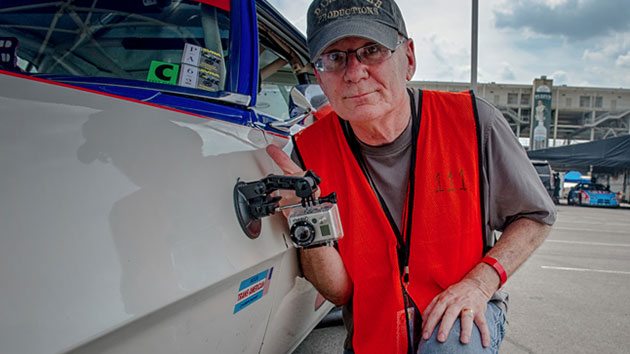Shooting a Vintage Race Car Docu-Series Mixing Gorgeous 4K and Scrappy Little HD POV Cameras
Filmmaker Randall Dark brought a lot of cameras to his latest shoot. Fast from the Past, the pilot-in-progress for a proposed reality-based television series following everyday characters as they rebuild classic muscle cars into racing vehicles to take out on the track. The project originated with Mark Mcilyar, a self-taught mechanic, body shop owner and vintage race-car driver who acts as producer, host and storyliner for the program. Dark describes Mcilyar and his friends as "interesting people with an outrageous hobby" worthy of a series dedicated to their exploits. We talked to Dark, director and cinematographer on the pilot, and his colleague Sharon Rankin, who helped wrangle cameras and shot behind-the-scenes stills for the project.
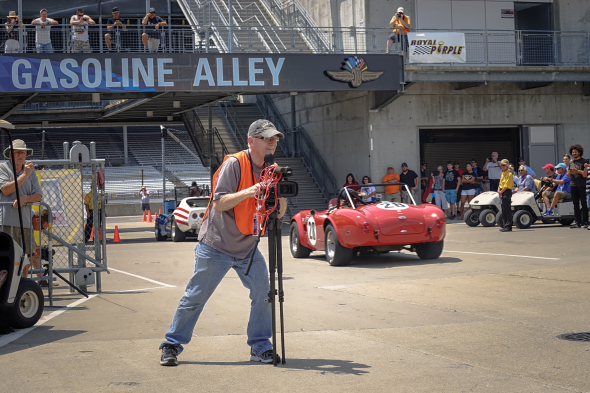
Randall Dark. Photos by Sharon Rankin
StudioDaily: So how did you connect with the wild world of vintage race car drivers?
Randall Dark: I love all sports. If it's 'the best in the world,' I'm there — whether it's tiddlywinks, the Olympics, or these crazy people putting together these cars. We follow a dentist and a fireman in their adventures racing on the Indianapolis Speedway. So when the show's host, Mark Mcilyar, brought the project to me, he had me at 'hello.'
What kind of cameras were in your kit?
RD: I brought a 4K JVC camera and a Canon camera, but I also had 10 GoPros and 10 JVC ADIXXION cameras with me. Part of telling the story is that you don't want to be up in the stands. You need the wide shot, but also the medium shot and the tight shot to tell a story. And it's innovative companies like JVC and GoPro and Canon, et cetera, who've developed the technology that gets people like me and Sharon inside events instead of outside of them.
Sharon Rankin: I'm a Nikon shooter. I brought Nikon D3s with four different lenses, and I had just tried the Sony a7R II.
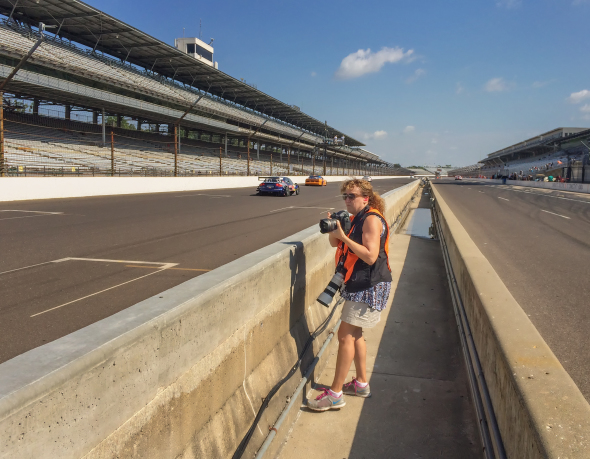
Sharon Rankin; photo by Scott Rankin
Randall, all of those action cameras helped you get inside some tight spaces with the drivers, right?
RD: I've shot NASCAR and other speed events, and it's really tricky to get cameras in certain places on these cars. The cars are unbelievably expensive, for one thing, and normally the professional drivers don't want you filming where you can see them doing their secret things. But what's different about a fireman and a dentist is that they are so generous and nice. We were allowed complete access.
What was different about the JVC cameras compared to the ubiquitous GoPro?
RD: The JVC action camera has a side LCD viewfinder and a zoom lens, so I can put it on the outside of cars, inside them, on the top of them. But when I was framing, with a GoPro you're running and gunning so you set it there and hope the angle is right and off it goes. But with a viewfinder and a zoom lens, I was able to get cool shots, zooming in or out a little bit for more flexibility. The JVC 4K camera was a very portable run-and-gun camera with an attached mic. I also brought a Canon HDV camera, and we brought in the 5D Mark II. I try to keep my camera technology as light as possible. I would use a more elaborate rig with a matte box and filters on a feature film like Angels Sing, but for this project I couldn't tell the story I wanted to tell with big technology.
But could you project it on a big screen if you needed to?
RD: Yes, and here's why. When you shoot an interview, you can shoot it at 4K and light it beautifully and it looks great. When you've got a GoPro or a JVC portable camera on the outside of a car racing by and you intercut that footage, your brain forgives the difference in image quality. You accept the difference in resolution because of the type of shot you're seeing.
What shots did you get that you're especially proud of?
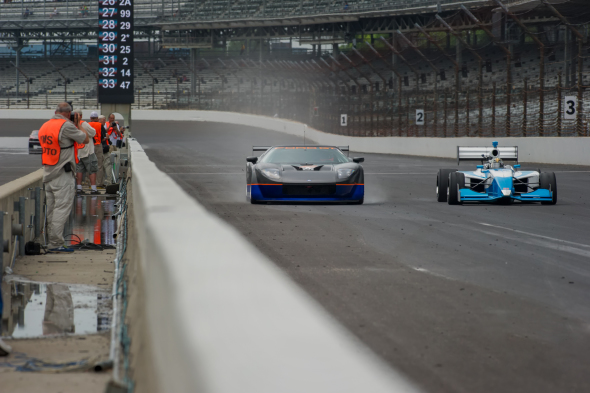
Photo: Sharon Rankin
SR: There was a shot that I took in the aisleway next to the racetrack where you see the car coming toward the camera. That was one of my favorite shots, partly because I was leaning out into the track and the car, in order to pass, came probably within a foot of me at 200 mph. I was pelted with stones and debris. For me, getting that shot was exhilarating and as scary as anything.
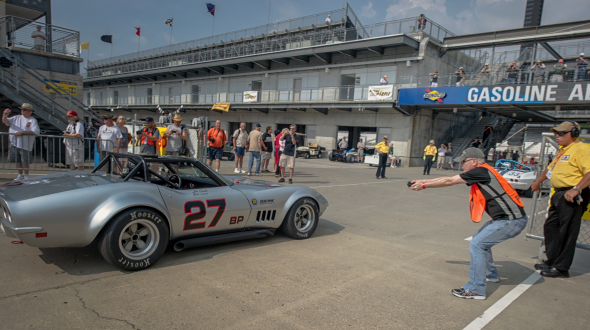
Photo: Sharon Rankin
RD: I really loved some of the POV shots I was able to get with the portable technology that I never could have gotten if I had to crawl in with the driver. I do love one shot that Sharon took. I was using one of the JVC cameras to shoot a car going by, and it looks like I've got a gun and I'm shooting at them. If you're a spectator, and you don't know that it's a tiny camera, you're wondering why that guy's following the car like he's got a lightsaber or something.

Host Mark Mcilyar
How long was the shoot?
RD: It was a three-day shoot for us. There are different events on different days, and we wanted to represent all of the different classes of cars. And it helps in telling the story to get things that happen on day one and then follow up on day two. And you have to do fun interviews. One of the race-car drivers went into the gravel pit and got rocks under the car that they have to get out before the next race. So I did one of the interviews under the car with the driver as he was cleaning out the rocks. I think other documentary approaches are valid, but I wanted people to feel the dirt and the grit [of the track] so that was a natural choice.
So how carefully did you plan the shoot? Did you plan out the shots and sequences you needed to get in order to tell the story you wanted to tell?
RD: I didn't want to know too much about the event before I threw myself into it. With a lot of my work, I get so excited about doing things that the work becomes — not childlike, but it has that enthusiasm. I don't recommend it for everybody, but I don't overplan or overthink my projects. I work them out in the moment, and I think that makes my work more organic.
But does it make it harder to stay focused?
RD: Kristen Cox produces for me a lot of the time, and she always says, "Randall, you've got to slow down." I need someone to keep me on one shot before I run across the racetrack to get that other shot over there. It's a combination of not being naive in the moment, but also not being a hardened expert in racing. I see it through rose-colored glasses, and I think the storytelling reflects that. I'm not heavily involved, but I'm a fan of what these guys are doing. I'm just experiencing it for the first time, and I can't wait to share it with the world.
Do you feel like you've developed your own documentary shooting style?
RD: When I did Makarios: A Rising Tide, I was in the Dominican Republic, shooting in a village that had no running water or electricity. In that environment, I moved slowly, quietly and respectfully. I'm going into their impoverished environment to tell their story as best I can, with as much respect as possible. My style in that world was calm, quiet. I became a different type of director because the environment required me to be a different type of person. On the Indy 500 racetrack I can get away with running around screaming and yelling because the track is so loud, but it's a type of energy I'm bringing to the type of cinematography I'm trying to create. You can't go around screaming in someone's house. If you look at the documentaries I've done, you'll see a different type of feeling and camerawork because the story I'm trying to tell demands it. Not because "Randall Dark's style is to use a shaky-cam."
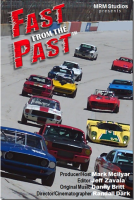 What did you learn from this project?
What did you learn from this project?
RD: One thing Sharon has taught me is to believe in vertical marketing. A lot of the time, I'm so busy directing or shooting that I forget about getting the shots that I need for marketing. Sharon, how many shots did you take?
SR: I took at least 7,000 images for this project.
RD: It's a lot of work for her to find those shots. But all of a sudden, I'm talking to broadcast and distribution and they ask, 'What do you have [to promote this]?' To say we have an edited program and behind-the-scenes photography, it just makes it a better package for presentation.
It sounds like you've developed a good working relationship.
SR: I love working with Randall, and I love racing and cars, so it was a great opportunity to put my passion for photography forward with this project. We did a lot of work, but it was a lot of fun.
Did you enjoy this article? Sign up to receive the StudioDaily Fix eletter containing the latest stories, including news, videos, interviews, reviews and more.
